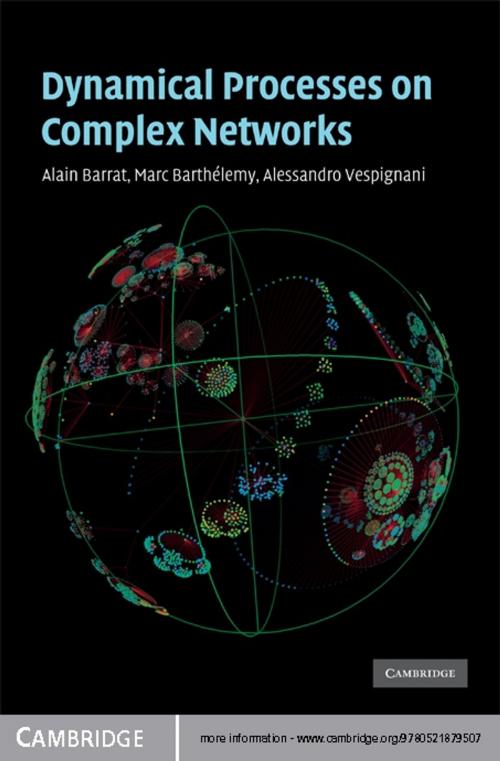Dynamical Processes on Complex Networks
Nonfiction, Science & Nature, Science, Physics, Mathematical Physics, Mathematics| Author: | Alain Barrat, Marc Barthélemy, Alessandro Vespignani | ISBN: | 9781139235037 |
| Publisher: | Cambridge University Press | Publication: | October 23, 2008 |
| Imprint: | Cambridge University Press | Language: | English |
| Author: | Alain Barrat, Marc Barthélemy, Alessandro Vespignani |
| ISBN: | 9781139235037 |
| Publisher: | Cambridge University Press |
| Publication: | October 23, 2008 |
| Imprint: | Cambridge University Press |
| Language: | English |
The availability of large data sets has allowed researchers to uncover complex properties such as large-scale fluctuations and heterogeneities in many networks, leading to the breakdown of standard theoretical frameworks and models. Until recently these systems were considered as haphazard sets of points and connections. Recent advances have generated a vigorous research effort in understanding the effect of complex connectivity patterns on dynamical phenomena. This book presents a comprehensive account of these effects. A vast number of systems, from the brain to ecosystems, power grids and the internet, can be represented as large complex networks. This book will interest graduate students and researchers in many disciplines, from physics and statistical mechanics to mathematical biology and information science. Its modular approach allows readers to readily access the sections of most interest to them, and complicated maths is avoided so the text can be easily followed by non-experts in the subject.
The availability of large data sets has allowed researchers to uncover complex properties such as large-scale fluctuations and heterogeneities in many networks, leading to the breakdown of standard theoretical frameworks and models. Until recently these systems were considered as haphazard sets of points and connections. Recent advances have generated a vigorous research effort in understanding the effect of complex connectivity patterns on dynamical phenomena. This book presents a comprehensive account of these effects. A vast number of systems, from the brain to ecosystems, power grids and the internet, can be represented as large complex networks. This book will interest graduate students and researchers in many disciplines, from physics and statistical mechanics to mathematical biology and information science. Its modular approach allows readers to readily access the sections of most interest to them, and complicated maths is avoided so the text can be easily followed by non-experts in the subject.















